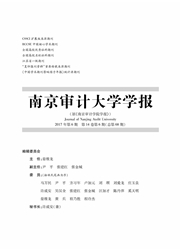

 中文摘要:
中文摘要:
在两阶段DEA模型的基础上引入不良贷款作为非期望产出,改进传统两阶段DEA模型,分别用新模型与原模型测算16家上市商业银行的效率,对总效率和子阶段效率分别进行分析,并比较存款获取阶段与利润获取阶段的效率,结果显示:不良贷款对银行效率有显著影响;“四大行”的效率高于股份制商业银行;2008年以前我国银行业主要依赖存款获取阶段来提升效率,在2008年以后主要依赖利润获取阶段来提升效率。
 英文摘要:
英文摘要:
On the basis of the two-stage DEA model, the non-performing loan is introduced as the non-expected output in or- der to improve the traditional two-stage DEA model. With the new model and the original model to estimate the efficiency of 16 listed commercial banks, this paper makes an analysis on the overall efficiency and sub-stage efficiency and makes a compari- son between the deposit-obtaining stage and the profit-gaining stage. The results show that NPLs have a significant influence on bank efficiency; the SOBs are more efficient than the JSBs. The over-all efficiency of banks in China is attributed by the depos- it-obtaining stage before 2008 and mainly attributed by the second stage after 2008.
 同期刊论文项目
同期刊论文项目
 同项目期刊论文
同项目期刊论文
 期刊信息
期刊信息
